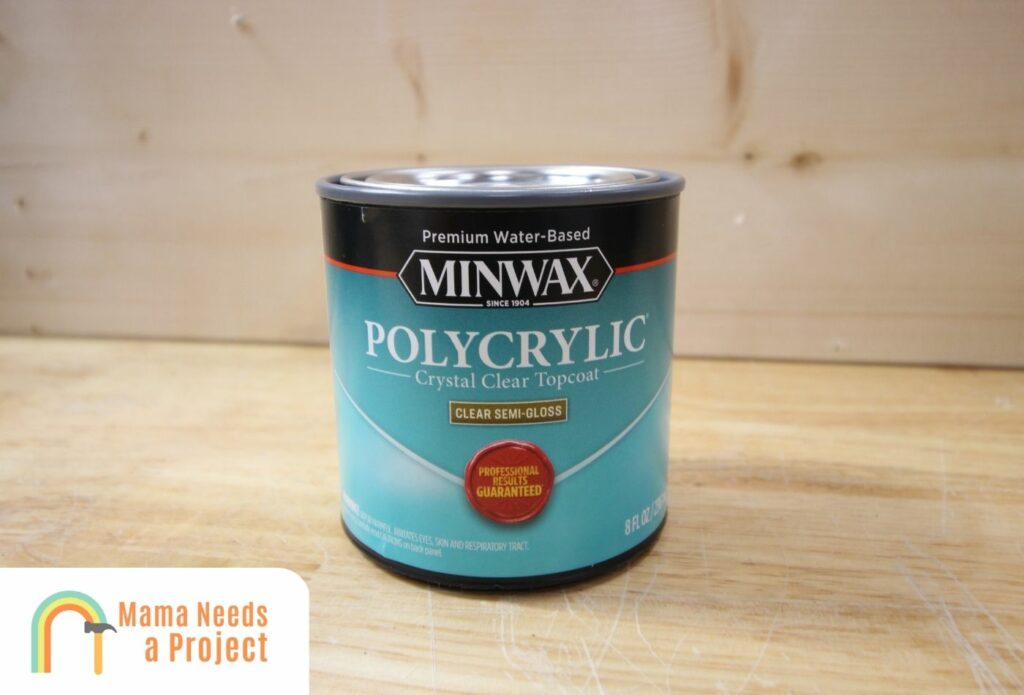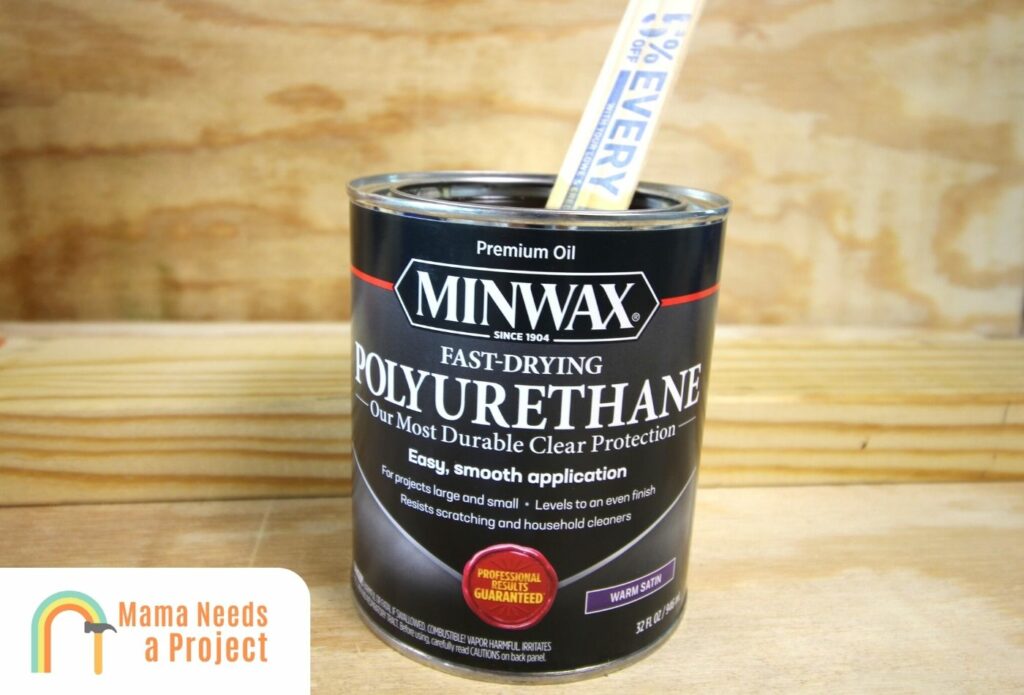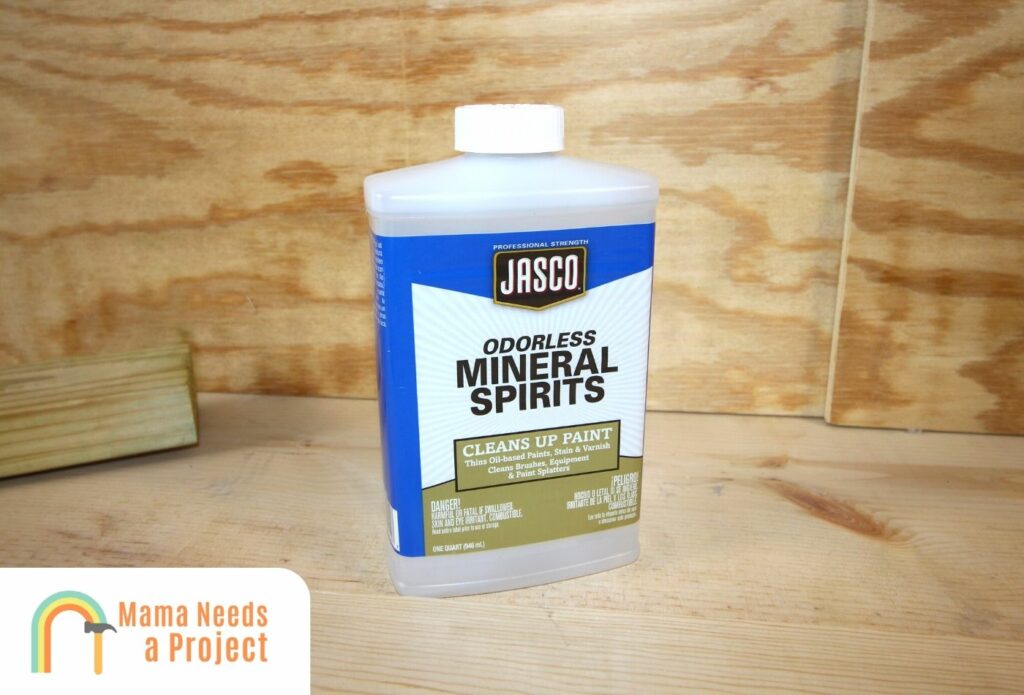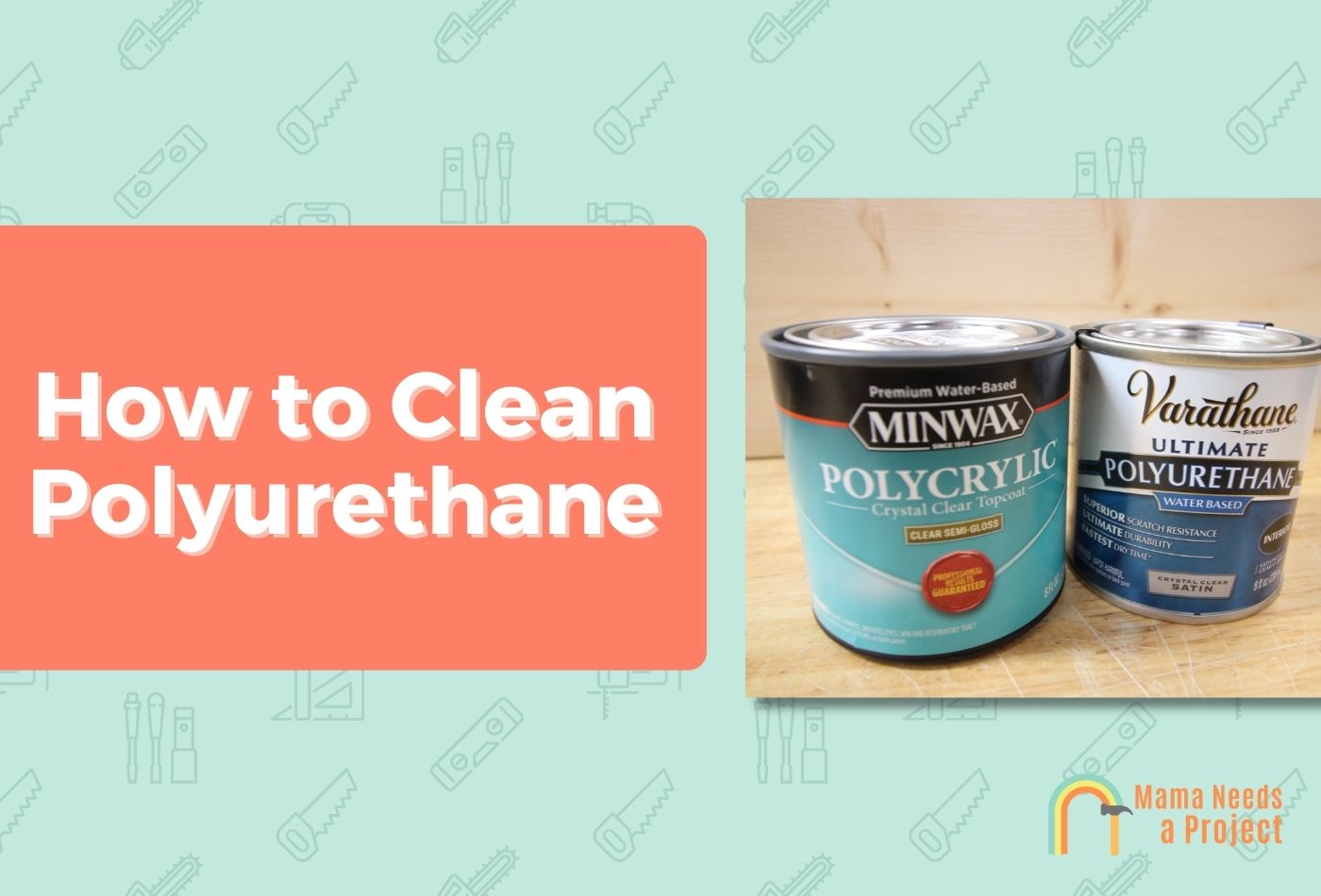How to Clean Polyurethane (Ultimate 2024 Guide)
Thank goodness polyurethane exists. As one of the most popular wood finishes on the market, this strong substance is so good at protecting a variety of beautiful surfaces from wear and tear.
You’ve probably seen this somewhat glossy finish on hardwood floors, tables, and even cabinets. It’s also used to make water-resistant fabrics!
If you have a polyurethane-coated item in your life, or work with it on the reg’, you’re probably wondering how to clean polyurethane from different surfaces. Here’s exactly how to easily clean polyurethane surfaces.
- Clean water-based polyurethane surfaces like fabric, furniture, or skin with warm water mixed with gentle dish soap, and a dry microfiber cloth.
- Clean oil-based polyurethane surfaces with mineral spirits, commercial wood cleaner, or paint thinner.
- When cleaning a polyurethane wood surface, don’t use ammonia, vinegar, steamers, or other abrasive materials on polyurethane hardwood floors.
Cleaning Water-Based Polyurethane

Before cleaning anything polyurethane-coated, it’s helpful to know the differences between water-based polyurethane and oil-based polyurethane.
They both have some unique properties that may require slightly different cleaning methods.
Water-based polyurethane is virtually odorless, easier to apply, and easier to clean up than oil-based polyurethane.
It’s not quite as thick, durable, and glossy as oil-based polyurethane. And it requires more coats than oil-based polyurethane. But it generally cleans up well with only gentle soap and water.
Another consideration when cleaning water-based polyurethane is that it scratches easier than oil-based polyurethane, so you’ll want to use non-abrasive materials when cleaning.
Cleaning Oil-Based Polyurethane

Oil-based polyurethane is a thicker type of finish with an amber color and a longer cure time, with an overall more durable finish.
Due to its strength and glossy finish, it’s more commonly used on hardwood floors, or anything where durability is the priority.
Cleaning oil-based polyurethane isn’t always as straightforward as using water and soap, like with water-based polyurethane.
Depending on the item, it’s most effective to clean oil-based polyurethane with mineral spirits, paint thinner, or commercial wood cleaner.

How to Clean Polyurethane Surfaces Without Causing Damage
Now, let’s break down how to clean polyurethane by item type. I’m going to cover several methods for cleaning wood furniture and cabinets, flooring, brushes, and even skin.
Remember, the type of polyurethane (oil or water-based) will also affect how you’re going to clean it.
We don’t want to cause any damage to your items, so carefully selecting your cleaning materials will pay off in spades.
Polyurethane Furniture & Cabinets
Are you trying to figure out how to clean polyurethane furniture without causing damage to the wood or fabric? I’ve got some answers.
1. Dust and dry-wipe regularly.
First thing’s first: if you have polyurethane-coated wooden furniture, it’s important to regularly dust it and dry-wipe it down each week.
The best protection for your polyurethane furniture is proactivity and consistent maintenance.
A microfiber cloth will serve you well for collecting dust and debris without scratching the surface with any gritty fibers. Don’t scrub hard with any solvents, just a dry dusting will do the trick.
2. Wash with water and gentle soap.
It’s great that you’ve kept up with regular dustings of your polyurethane table or cabinetry, but this won’t cover all scenarios.
Whether it be months of built-up grime, or unexpected spills and splatters, you’ll eventually have to do a bit of deep cleaning. And when you do, you’ll be happy to discover how simple it is.
All you need is:
- A bucket of warm water
- A few drops of gentle dish soap or detergent
- A cloth or soft sponge.
Fill up a bucket with warm water, then mix in a few drops of gentle dish soap until the solution gets a little foamy.
Dip the clean cloth or sponge into the solution, then squeeze out the excess water. Gently wipe down the entire polyurethane surface, following the grain to prevent water stains.
Polyurethane Brush
Poly is often applied with a paint brush. If you use polyurethane on the regular for various DIY home projects, you probably want to know how to clean your polyurethane brush.
The last thing we want is to ruin a quality paint brush because we couldn’t get the crusties out. But don’t worry; it’s not hard to clean off!
If you’re working with water-based polyurethane:
- Swirl the dirty brush in a bowl of hot water for 3 minutes.
- Remove from water, and add a few drops of gentle dish soap to bristles. Rub in and create suds.
- Rinse under a stream of warm water until all the suds are washed out. Repeat as needed.
If you’re working with oil-based polyurethane:
- Submerge the brush in a cup of mineral spirits. Let it soak for 5-30 minutes.
- Take the brush out and rinse off under cold water with soap, until the mineral spirits is fully washed out. Use a paper towel to help get it all out, as dried mineral spirits can damage the bristles.
- Alternatively, you can soak the brush in a cup of paint thinner for 3 minutes. Then repeat the same steps above.
Polyurethane Fabric
You might not have guessed, but some fabrics and upholstery are actually made with polyurethane.
Poly coating can enhance the durability and weather resistance of an item, which is why you’ll find it in items like coats and couches.
So what happens if you stain your polyurethane fabric, or just want to do a deep cleaning? Fortunately, you don’t need any special solvents to clean it.
Here’s what you’re going to do.
1. Vacuum.
You’re going to vacuum the fabric on your furniture, taking care to get rid of any hair or fur. Remove all the cushions and get into the crevices.
Of course, this step only applies to upholstered furniture, not clothing.
2. Blot out the spill and apply baking soda.
If you’ve spilled something on the fabric, take this step to remove stains.
First, you’re going to blot out the spill with absorbent paper towels or a dry cloth. Don’t press down too hard, or the stain will sink deeper into the polyurethane fabric.
Once you’ve absorbed what you can, sprinkle baking soda over it, and allow it to absorb to spill for 30 minutes.
Then take your vacuum and suck up the baking soda.
3. Make a water and soap solution.
Now that you’ve dealt with the spill absorption, it’s time to do a deep clean of the dirty area.
You’re going to mix together a bucket of warm water with 3 tablespoons of mild detergent. If you’re cleaning a very small item, 1-2 tablespoons of detergent will be sufficient.
Mix the soap and water together into a sudsy solution. It’s time to scrub!
4. Scrub the solution into the fabric, then wash.
Dip a clean microfiber cloth or gentle sponge into the soapy water, and squeeze out some of the excess water. You don’t want it sopping-wet, but pretty damp.
Add some of the solution directly onto the dirty area as well, and gently rub in a circular motion. This should further dissolve the dirt, grime, and stain.
Lastly, you’re going to take a fresh clean cloth and wet it with warm water. Gently wipe down the area you just cleaned to remove as much of the soap as possible, then let the surface dry.
Polyurethane Hardwood Floors
If you have polyurethane finish hardwood floors, you might be concerned about keeping them clean while also protecting the gorgeous flooring from damage.
Hardwood floors naturally get dirty after regular use, so it’s totally normal to see grime, dirt, water stains, and other spills. Luckily, cleaning polyurethane-coated flooring is pretty straightforward.
Try these methods to get your hardwood floors glistening like new.
1. Dry mop the floor.
Dry mopping the floor should be included in your regular weekly cleaning and upkeep. This preventative maintenance is so easy and simple, and goes a long way in ensuring the poly finish stays smooth and clean.
Just take a Swiffer mop or regular mop and run it across the floor in sweeping motions. Make sure not to press down too hard, or use anything with an abrasive surface against the floor, as this may cause scratches.
2. Vacuum up the debris.
It’s also prudent to vacuum your polyurethane wood floors weekly. Make sure your vacuum cleaner doesn’t have sharp, abrasive bristles that could scratch the floor.
Vacuuming regularly will help remove dust and prevent debris from building up into grime and damaging the polyurethane coating overtime.
By taking this quick preventative measure, you’ll also keep the flooring looking glossier and avoid having to do as many deep cleans.
3. Damp mop the floor.
Assuming you’ve dry mopped or taken a vacuum cleaner to your floor, the next step for a deeper clean is damp mopping.
First, fill a bucket with warm water and add a few tablespoons of mild, pH-neutral soap.
Next, dip a soft microfiber sponge mop into the solution, then ring out water until the mop is damp but not wet. Excess water isn’t good for hardwood floors.
Now, mop the flooring back and forth in the direction of the grain. Once the floor is fully mopped, take a dry mop or dry cloth and dry the area of any leftover water.
4. Clean spills with diluted window cleaner or commercial cleaner.
The last method of cleaning polyurethane wood floors is with a diluted window cleaner, or a commercial hardwood floor cleaner designed to be safe for polyurethane.
To clean a spill with window cleaner, add one-part ammonia-free window cleaner in a bowl and two-parts water. Dampen a microfiber cloth in the solution, and wipe down the spill or grimy area.
If you want to skip the homemade solutions and just buy a cleaner, Weiman Hardwood Floor Cleaner & Polisher offers a two-in-one product that’s great for a shinier finish.
And Bona Hardwood Floor Cleaner is gentle and effective on poly-coated floors.
Pro tip: A lot of sites online will recommend citrus, wax, ammonia, and vinegar. This is NOT recommended for your polyurethane flooring.
Polyurethane on Hands
What if you get polyurethane on your hands? There are a few different ways to safely get polyurethane off your hands and skin.
Removing water-based poly from your hands is easy. Just thoroughly wash your hands with gentle liquid dish soap and water. Add a little baking soda or natural scrub if you need something a little stronger for adhesive removal.
If you’re dealing with oil-based polyurethane, you can also try washing it off with soap and water, or a natural scrub for extra exfoliation.
If it’s being really stubborn, try adding a little mineral spirits to the spot and rubbing in, then washing off thoroughly.
Additional Tips for Maintaining Polyurethane Wood Surfaces
- Don’t use vinegar on polyurethane wood floors.
- Don’t buff, polish, or wax poly-coated floors.
- Don’t steam clean poly-coated floors.
- Don’t use citrus or wax on polyurethane wood furniture.
- Dry mop, dust, and vacuum poly surfaces regularly to prevent buildup of grime and stains.
- A diluted window cleaner can be an effective cleaning agent for any polyurethane surface.
- Be careful not to scrub hard or use exfoliating materials on water-based poly, as it scratches easier than oil-based poly.
- Periodically recoating your polyurethane floors can greatly increase the longevity, strength, and visual beauty of the finish.
FAQs
Can you clean polyurethane with soap and water?
Yes, you can clean many types of polyurethane surfaces with soap and water. Make sure the soap is gentle and non-abrasive.
Keep in mind, soap and water is the most effective for water-based polyurethane, while something stronger may be needed for oil-based poly.
Can you use Windex on polyurethane?
Yes, you can use Windex diluted with water to wash polyurethane wood floors or furniture.
Does vinegar break down polyurethane?
Yes, distilled white vinegar can work to break the adhesive bonds in polyurethane.
But it’s not recommended to use vinegar on polyurethane furniture or hardwood flooring, as this could actually cause damage with repeated use.
Final Thoughts
There you have it – the ultimate guide for how to clean polyurethane surfaces safely, without causing any damage!
As you can see, you have to take different approaches depending on the type of poly and surface.
Hardwood flooring, polyurethane fabric, furniture, and skin can be cleaned with water and pH neutral soap.
And polyurethane brushes can be cleaned with mineral spirits or paint thinner and water.

Jessica Vaillancourt is a freelance writer and blogger obsessed with the Travel, Wellness, and Personal Development industries.
She has 5+ years of experience helping human-first agencies, global companies, and entrepreneurs crush their content marketing goals, and serve more people. Jessica’s work has appeared on leading websites like UpgradedHome.com, BetterHelp.com, and TheDiaryofaNomad.com.
Today, her sole focus (besides finding the world’s best coffee shop) is writing to serve humans, and slow traveling abroad to expand her mind. You can get to know her work at JessAnneWriting.com.

